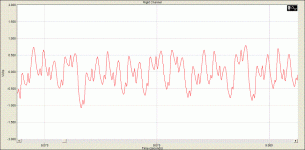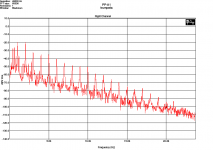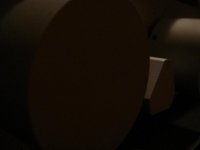john curl said:Wavebourn, we have been over this in detail for many years. You should talk to me about what we have found, (and not found) before guessing. It seems to involve the physics of materials and annealing, as much as anything else. It is difficult to measure, BUT I have directly compared Blowtorch preamps made with quality copper wire to Blowtorch preamps with quality silver wire. There is a sonic difference.
Ok, let's talk if it involves some secrets not for the forum... 😉
Wavebourn, it is not necessarily about secrets. What it is, is experience.
This does not mean that we haven't attempted to read up on specific details, but the details are not readily available.
This does not mean that we haven't attempted to read up on specific details, but the details are not readily available.
KBK said:
I am now at the point in cable design considerations where I can control that aspect in totality-but it took nearly 20 years of investigation to get there.
I can tell you such a thing, but will not explain it, as that involves dispensing the knowledge that puts food on my table.
I had certain doubts regarding the motivations of your audio stances, but this explains everything, thank you very much.
KBK said:
Nothing personal Scott, I'm only grabbing your post as a point to reply to. I'm sure by now that you understand I pass no ill will in your direction.
~~~~~
The evidence of directionality in cables is anecdotal and incidental-but numbers in the millions of individual instances of 'noticing the effect', or consideration.
This goes well beyond the idea of bad design.
No offense ever taken.
Once wire is assembled into cable with terminations you have two ends that by construction method "could" be different. I'm more concerned with directionality in a single strand of say hook up wire. A priory inside something like the Blowtorch connecting two parts of a circuit together which direction to choose? So how many connections 20, 50? Thats 2^20 possible ways of hooking it up do you try them all?
Unfortunately all to often we are just back to audio being the only discipline that requires suspending the laws of known physics and inventing new ones to make everyone happy.
Considering an AC signal goes both ways, the violation of symmetry alone makes these claims absurd.
john curl said:Wavebourn, it is not necessarily about secrets. What it is, is experience.
This does not mean that we haven't attempted to read up on specific details, but the details are not readily available.
Are they dynamic or static by nature?
I mean, what is needed for a measurement experiment...
Speaking of physics, I heard about p-n junctions, but I don't buy this theory: I remember copper salt rectifiers, they had some significant voltage drop, so it would be obviously measured.
scott wurcer said:...... Thats 2^20 possible ways of hooking it up do you try them all?....
Yes, in the high end you have to. And measuring is out, so you have to do it all by ear. You would eventually start to wonder how many people would notice if just a few of the wires were incorrectly sexed.
PMA said:Some of you guys do not know much about nature of music signals. They have DC = 0 only when longterm averaged. Not short time.
PMA said:Hereby the corresponding spectrum (SACD, trompet + piano). Time series was only short part of this 64K analyze.
Thanks for educating us. Suddenly, I got a revelation: you can do Fourier spectras!
Care to enlighten us what has this to do with the cable directionality and/or break in?
I can see that music is considered AC here, which is true only in case of long time averaging. The case is that AC has zero DC component, music has not over shorter period of time.
PMA said:The case is that AC has zero DC component, music has not over shorter period of time.
So? What has this to do with the cable directionality and/or break in?
Wavebourn said:I can understand skin effect on very high frequencies, but...
I do not believe that there is any science, engineering or theory yet extant that can explain anything related to these sorts of reported audible differences. Understandably, until that becomes possible (one way or the other) there are those who either doubt or deny the reality or possibility that this even exists as a real effect.
The skin effect is not likely what is occuring, although, perhaps some variant of the idea is at play - but again there is no scientific evidence at this time.
_-_-bear
PMA said:I can see that music is considered AC here, which is true only in case of long time averaging. The case is that AC has zero DC component, music has not over shorter period of time.
Show me a speaker that can reproduce a "long time" DC. 😀
Also, pleas explain how DC presence depends on a sample rate... I can understand, however, dynamic range on highs, so believe if properly recorded and reproduced SACD have to sound better...
I do not speak about speaker, and SACD was mentioned only for the reason that it was analyzed (spectrum goes behind 22kHz). The only thing I wanted to mention is that music had not DC = 0 over shorter time interval. It is up to you to get why I am saying this.
PMA said:Some of you guys do not know much about nature of music signals.
PMA said:The only thing I wanted to mention is that music had not DC = 0 over shorter time interval. It is up to you to get why I am saying this.
Your posts were insulting ("you guys don't know much"), off topic, useless to anybody but to yourself (part of your self-promoting campaign here) and rude ("It is up to you to get why I am saying this"). Thank you for your contribution.
Bear knows! And thanks for the informed input, PMA. This is the sort of thing that separates the Blowtorch from the HCA2000.
The Parasound JC-2 is mostly an HCA2000 with Blowtorch principles added. Yes, we removed the silver clad copper wire, and put in just straight copper wire in the JC-2. Took the edge off. Of course, we did a few other important things, but they would be laughed at as well. Oh well, at least I finally got an A rating with a reasonably priced preamp. Had not done that for about 33 years previously.
The Parasound JC-2 is mostly an HCA2000 with Blowtorch principles added. Yes, we removed the silver clad copper wire, and put in just straight copper wire in the JC-2. Took the edge off. Of course, we did a few other important things, but they would be laughed at as well. Oh well, at least I finally got an A rating with a reasonably priced preamp. Had not done that for about 33 years previously.

John;
I don't laugh, my friend. I honestly want to experience and understand, that's why I am asking, are that artifacts static or dynamic, so we can arrange an experimental setup to catch up that ghosts.
I don't laugh, my friend. I honestly want to experience and understand, that's why I am asking, are that artifacts static or dynamic, so we can arrange an experimental setup to catch up that ghosts.
syn08 said:Your posts were insulting ("you guys don't know much"), off topic, useless to anybody but to yourself (part of your self-promoting campaign here) and rude ("It is up to you to get why I am saying this"). Thank you for your contribution.
Not more rude than the majority of your posts in this thread.
With or without that untold BS flag you and your buddy Edmond like so much.
But much more informative.
Tino
PMA said:I do not speak about speaker, and SACD was mentioned only for the reason that it was analyzed (spectrum goes behind 22kHz). The only thing I wanted to mention is that music had not DC = 0 over shorter time interval. It is up to you to get why I am saying this.
I'm reading my wife's thoughts well, but you are not my wife, so please be so kind and explain what do you mean. I can guess only that you mean welding of electrons to each other by proper repetition of constant and alternate currents, but it is only a guess made by humble dumb person like I am.
- Status
- Not open for further replies.
- Home
- Amplifiers
- Solid State
- John Curl's Blowtorch preamplifier


